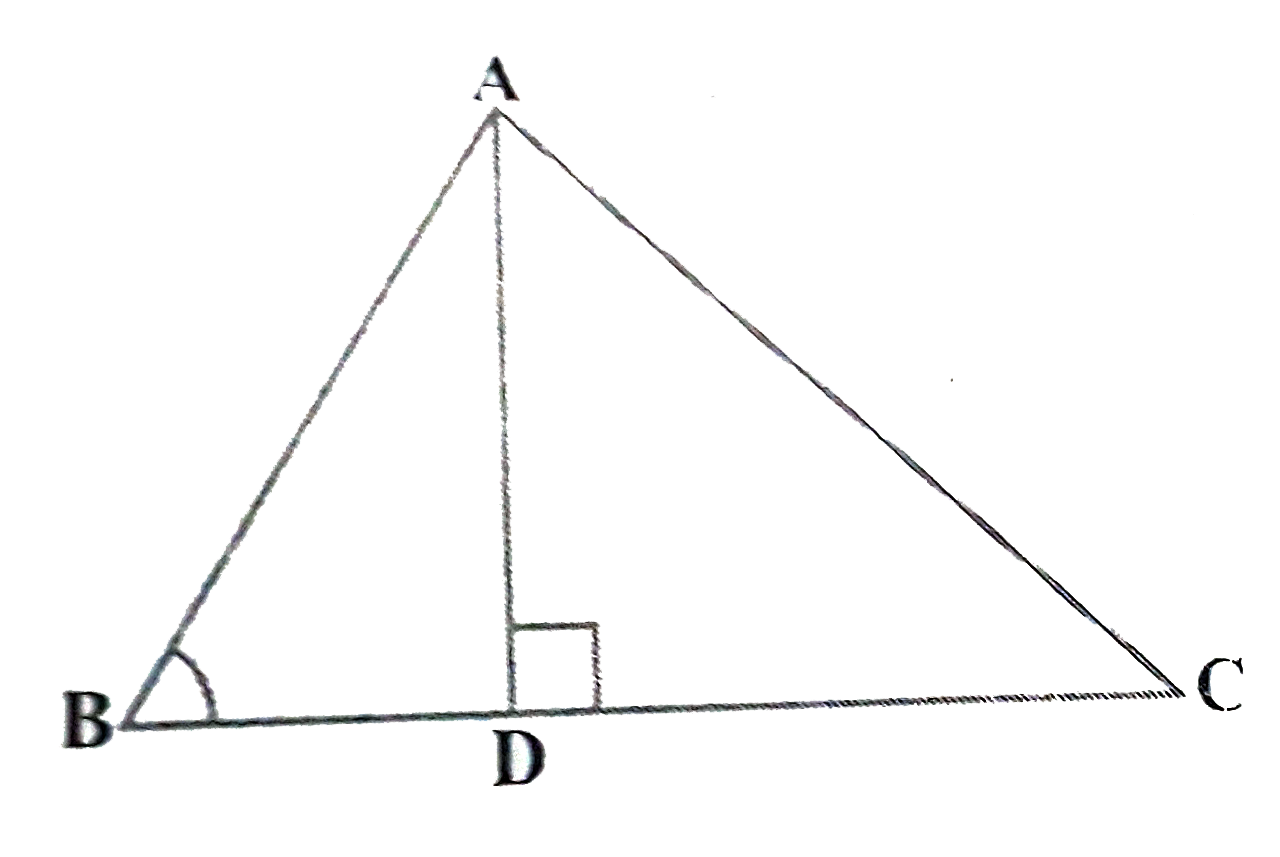is a triangle in which and is any point in . Prove that .
To prove that AB2−AD2=BD⋅CD in triangle ABC where AB=AC and D is any point on BC, we can follow these steps:
Step 1: Draw the Triangle and Perpendicular
Draw triangle ABC with AB=AC. Let D be a point on line segment BC. Draw a perpendicular line from point A to line segment BC, and let the foot of the perpendicular be point E.
Hint: Remember that the perpendicular from a vertex to the opposite side can help in establishing relationships between the sides of the triangle.
Step 2: Identify Congruent Triangles
In triangles AEB and AEC:
- AB=AC (given)
- AE=AE (common side)
- ∠AEB=∠AEC (angles opposite equal sides)
By the SAS (Side-Angle-Side) criterion, triangles AEB and AEC are congruent.
Hint: Use the properties of congruent triangles to establish equal lengths of corresponding parts.
Step 3: Conclude Equal Segments
From the congruence of triangles AEB and AEC, we conclude that:
BE=CE
Hint: Congruent triangles have corresponding sides that are equal.
Step 4: Apply Pythagorean Theorem
In right triangles AED and AEB:
- For triangle AED:
AD2=AE2+DE2 (1)
- For triangle AEB:
AB2=AE2+BE2 (2)
Hint: The Pythagorean theorem relates the lengths of the sides in right triangles.
Step 5: Subtract the Two Equations
Subtract equation (1) from equation (2):
AB2−AD2=(AE2+BE2)−(AE2+DE2)
This simplifies to:
AB2−AD2=BE2−DE2
Hint: When subtracting equations, similar terms will cancel out.
Step 6: Factor the Right Side
The right side can be factored using the difference of squares:
BE2−DE2=(BE+DE)(BE−DE)
Hint: The difference of squares formula a2−b2=(a+b)(a−b) is useful here.
Step 7: Relate to Segments on Line BC
Since BE=CE (from congruence), we can denote:
- BD=BE−DE
- CD=BE+DE
Thus, we can write:
AB2−AD2=(CD)(BD)
Hint: Relating segments back to the original triangle helps in completing the proof.
Conclusion
We have shown that:
AB2−AD2=BD⋅CD
This completes the proof.
Draw triangle ABC with AB=AC. Let D be a point on line segment BC. Draw a perpendicular line from point A to line segment BC, and let the foot of the perpendicular be point E.
In triangles AEB and AEC:
- AB=AC (given)
- AE=AE (common side)
- ∠AEB=∠AEC (angles opposite equal sides)
From the congruence of triangles AEB and AEC, we conclude that:
BE=CE
In right triangles AED and AEB:
- For triangle AED:
AD2=AE2+DE2 (1)
AB2=AE2+BE2 (2)
Subtract equation (1) from equation (2):
AB2−AD2=(AE2+BE2)−(AE2+DE2)
This simplifies to:
AB2−AD2=BE2−DE2
The right side can be factored using the difference of squares:
BE2−DE2=(BE+DE)(BE−DE)
Since BE=CE (from congruence), we can denote:
- BD=BE−DE
- CD=BE+DE
AB2−AD2=(CD)(BD)
We have shown that:
AB2−AD2=BD⋅CD
Topper's Solved these Questions
Similar Questions
ABC is an isosceles triangle with AB=AC and D is a point on AC such that BC2=ACXCD. Prove that BD=BC.
View SolutionABC is an isosceles triangle with AB=AC and D is a point on AC such that BC2=ACxCD. Prove that BD=BC
View SolutionIn fig., if AD⊥BC, prove thatAB2+CD2=BD2+AC2.
View SolutionABC is a triangle in which ∠B =2 ∠C.D is a point on BC such that AD bisects ∠BAC and AB=CD . Prove that ∠BAC=720.
View SolutionIn figure, ABC is a triangle in which ∠ABC=90∘and AD⊥BC. Prove that AC2=AB2+BC2−2BC.BD.

View SolutionABC is a triangle in which ∠B=2∠C.D is a point on BC such that AD bisects ∠BAC and AB=CD. Prove that ∠BAC=72∘.
View SolutionIn Figure, ABC is a triangle in which ∠B=2∠C . D is a point on side BC such that AD bisects ∠BAC and AB=CD.BP is the bisector of ∠B . The measure of ∠BAC is
(a) 720
(b) 730
(c) 740
(d) 960
View SolutionIn an isosceles triangle ABC with AB=AC , BD is perpendicular from B to the side AC . Prove that BD2−CD2=2 CDAD
View SolutionIn right-angled triangle ABC in which ∠C=90∘ , if D is the mid-point of BC , prove that AB2=4 AD2−3 AC2 .
View SolutionIf ABC is an isosceles triangle such that AB=AC and AD is an altitude from A on BC . Prove that (i) ∠B=∠C (ii) AD bisects BC (iii) AD bisects ∠A
View Solution
